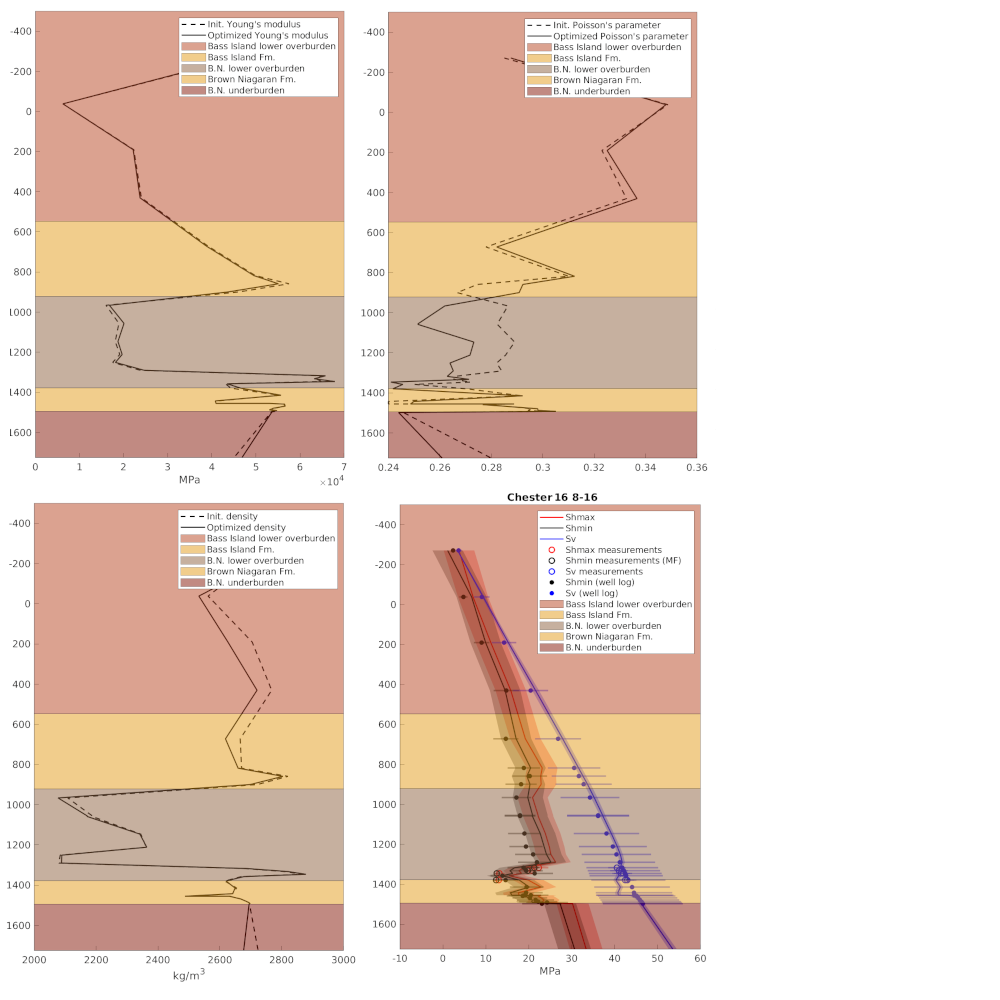The project consisted of three parts. The first part, led by Battelle, involved reprocessing of existing seismic data to determine the spatial distribution of the stress orientation and anisotropy. The second part, led by the University of Pittsburg, aimed to generate rock physics models relating S-wave velocity anisotropy data to stress magnitude. The third part, led by SINTEF Digital, used numerical simulation and optimization algorithms to calibrate geomechanical models to the available data, and compute the full stress fields throughout the model volumes. This part is further described below.
Geological models of the FutureGen and Perch sites were constructed by Battelle. These models extended from bedrock to the surface and were of layer-cake type structures. Well stress measurements and stress estimates from seismic data were utilized throughout the project. These data were partial, mostly consisted of point-wise estimates of principal stress direction, or the local magnitude of one of the principal stress component.
SINTEF Digital employed their open-source toolkit MRST to simulate complete stress fields using the geomechanical capabilities of the software. This was achieved through the virtual element method, which is capable of handling complex grids that may include irregular or degenerated grid cells. Boundary conditions were chosen and material parameters (linear elastic parameters and density) were adjusted layer-wise for the resulting stress field to match observed measurements to the extent possible. This automatic calibration procedure was carried out using the nonlinear, gradient-based optimization functionality of MRST, where the gradients of the geomechanical models were obtained using the adjoint method in combination with automatic differentiation.
The final results were analysed in a Bayesian framework, where uncertainties in input measurement data translate into uncertainties in the calibrated values (boundary conditions, material properties) and further into the simulated results themselves.




